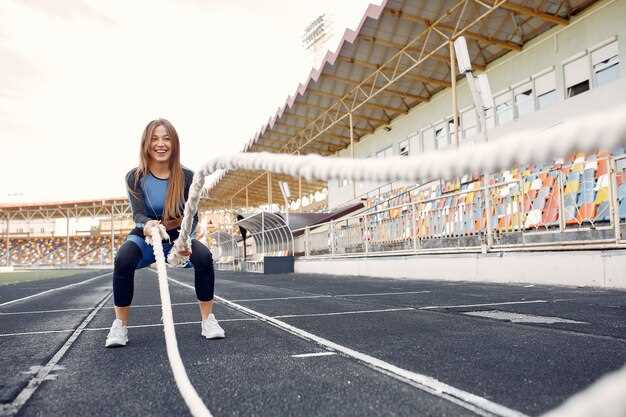
In the world of motorsport, where speed and precision collide, female drivers are not just participants; they are revolutionaries breaking barriers and redefining the essence of racing. Historically dominated by men, racing has seen an inspiring transformation as talented women rise to prominence, proving their mettle on tracks around the globe. These female drivers challenge stereotypes and push beyond the limitations set by traditional norms, carving out a space that celebrates both skill and courage.
The journey of women in racing is marked by significant milestones that illustrate their relentless pursuit of excellence. From the early trailblazers who fought for recognition to the contemporary stars who dominate the leaderboard, each story reflects a broader narrative of perseverance and determination. These drivers not only excel in their craft but also serve as role models for aspiring talents, demonstrating that the racetrack is a space for everyone, irrespective of gender.
As female drivers continue to make headlines and change perceptions, their impact extends far beyond the circuit. They are catalysts for change within the industry, advocating for equality and inclusivity in a traditionally male-centered sport. By harnessing their platforms, these women inspire a new generation of racers, encouraging young girls to pursue their dreams in racing and beyond, ultimately reshaping the future of motorsport.
How Female Drivers are Reshaping Motorsports
Female drivers are making significant strides in the world of motorsports, breaking down long-standing barriers and challenging stereotypes. This shift has led to a more inclusive environment, where talent and skill take precedence over gender. Women like Danica Patrick, Michelle Mouton, and Susie Wolff have not only achieved success in their respective fields but have also become role models for aspiring female racers.
The presence of female drivers in high-profile competitions, such as Formula 1 and NASCAR, is increasing visibility for women in motorsports. Their participation challenges the notion that racing is a male-dominated sport. As these female drivers showcase their capabilities on the track, they inspire a new generation of women to pursue careers in this challenging arena.
Moreover, female drivers bring diverse perspectives and approaches to racing. Their contributions extend beyond mere participation; many are actively involved in team leadership, management, and advocacy for gender equality in the sport. This multifaceted involvement fosters a culture of collaboration and innovation, ultimately benefiting the motorsports industry as a whole.
Initiatives aimed at supporting female drivers, such as mentorship programs and sponsorship opportunities, are crucial for the future of motorsports. By investing in female talent, the industry can unlock untapped potential and promote a more balanced representation. As more women take the wheel, motorsports is evolving into a space that not only celebrates talent but also champions diversity.
In conclusion, female drivers are reshaping motorsports by breaking barriers, inspiring change, and paving the way for future generations. Their impact is profound, proving that skill and determination know no gender. As this trend continues, the landscape of motorsports will undoubtedly become richer and more varied, reflecting the diverse world we live in.
Key Organizations Supporting Women in Racing

Several organizations play a crucial role in promoting representation and supporting female drivers in the racing industry. One of the most prominent is the Women’s Sports Foundation, which advocates for equality in sports and provides funding for girls and women pursuing racing careers. Their programs aim to break down barriers and ensure that women have equal access to opportunities within motorsport.
The International Automobile Federation (FIA) has also made significant strides by establishing initiatives such as the Women in Motorsport Commission. This program focuses on increasing female participation at all levels of motorsport, from grassroots to the highest echelons of racing. The FIA works to develop training, mentorship, and networking opportunities tailored for women, enhancing their visibility and representation in a traditionally male-dominated field.
Another key player is the Girls on Track program, initiated by the FIA. This educational initiative encourages young girls to pursue careers in motorsport through immersive experiences and workshops. It aims to nurture the next generation of female drivers, engineers, and leaders, thereby increasing representation across various sectors of racing.
Additionally, organizations like the NASCAR Drive for Diversity program seek to create inclusive pathways for women and minority drivers within NASCAR. By providing scholarships, training, and competitive opportunities, they help young female talent gain the exposure necessary to thrive in the competitive world of racing.
Collectively, these organizations are instrumental in transforming the racing landscape, fostering an environment where female drivers can break barriers and inspire change throughout the industry.
The Impact of Representation on Young Female Aspiring Drivers

Representation plays a crucial role in shaping the aspirations and confidence of young female drivers. When these aspiring racers see women succeeding in motorsports, it fosters a sense of possibility and ambition. This visibility helps to challenge stereotypes about gender roles in racing, empowering young girls to pursue their dreams unapologetically.
Notable figures in the racing world, such as Danica Patrick and Leilani Munter, serve as powerful role models, showcasing that success is achievable. Their achievements not only inspire young female drivers but also contribute to changing the narrative within the motorsport community. Young girls who witness female drivers in competitive environments begin to believe that they, too, can excel in this field.
The media representation of female drivers is essential in furthering this impact. Positive coverage highlights their skills, challenges, and triumphs, creating a more inclusive narrative. This visibility can deeply influence how young girls perceive their potential careers in racing. When they feel represented, they are more likely to engage in related activities, such as karting or attending racing events.
Moreover, mentorship programs featuring established female drivers can enhance this impact. Direct interaction with role models helps young female drivers gain insight, skills, and encouragement, allowing them to navigate the challenges they may face in a predominantly male industry. This supportive network is invaluable in building confidence and enhancing the overall experience of young women in racing.
Ultimately, the representation of female drivers is not just about visibility; it is about creating an ecosystem where young girls can envision themselves as future champions. By breaking barriers and inspiring change, these women are paving the way for the next generation of female drivers, ensuring that the path forward is more inclusive and dynamic.












